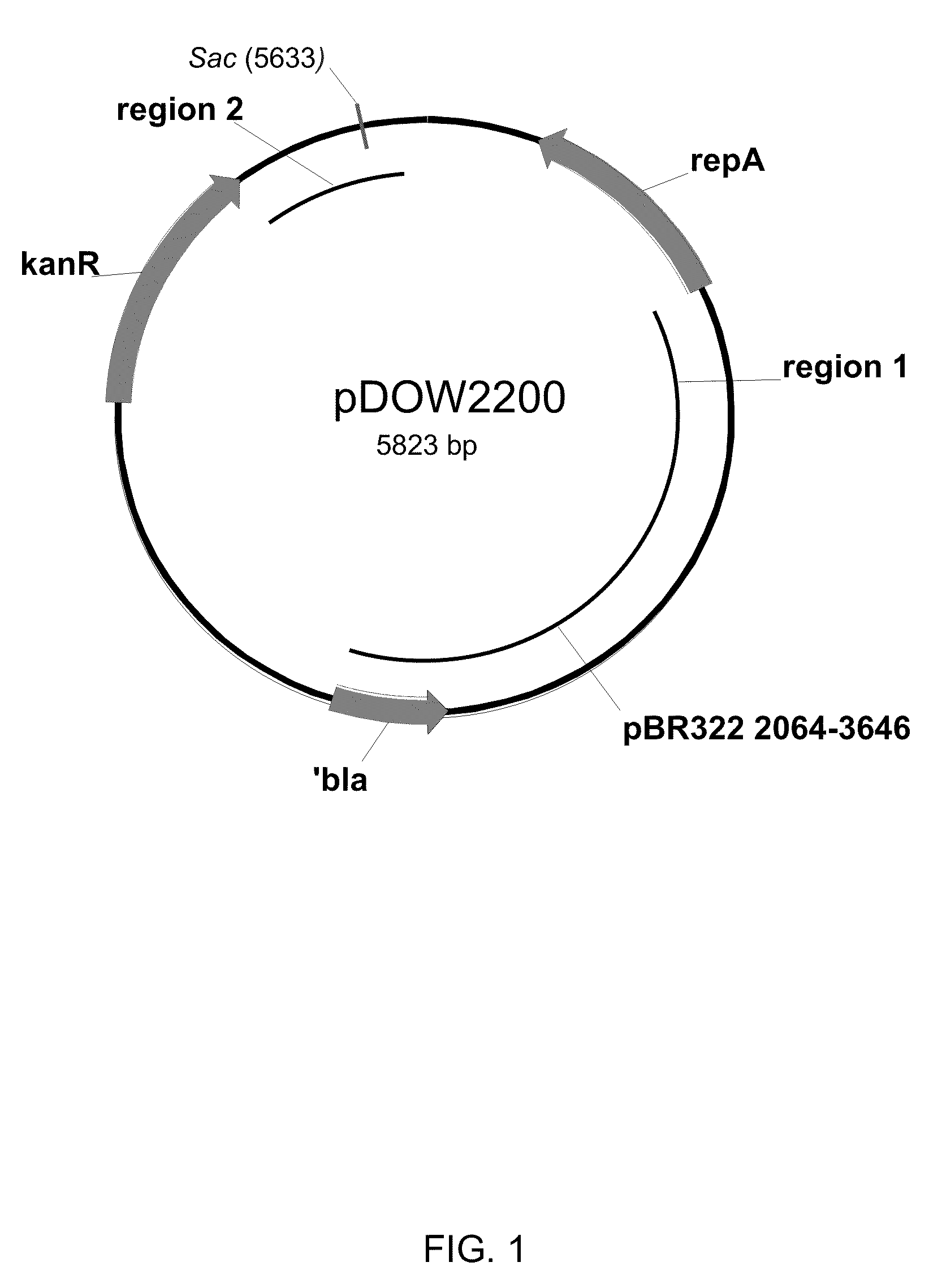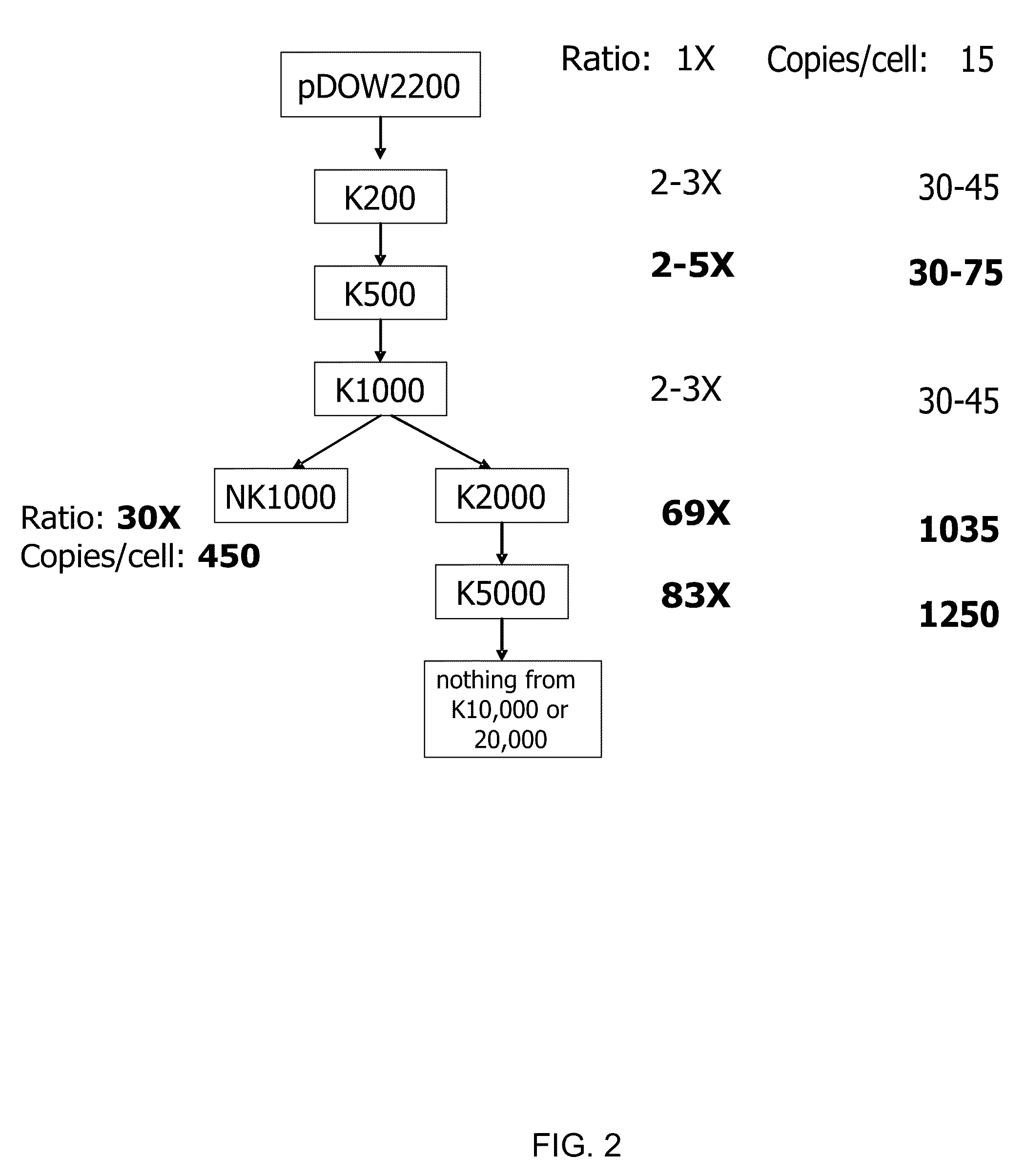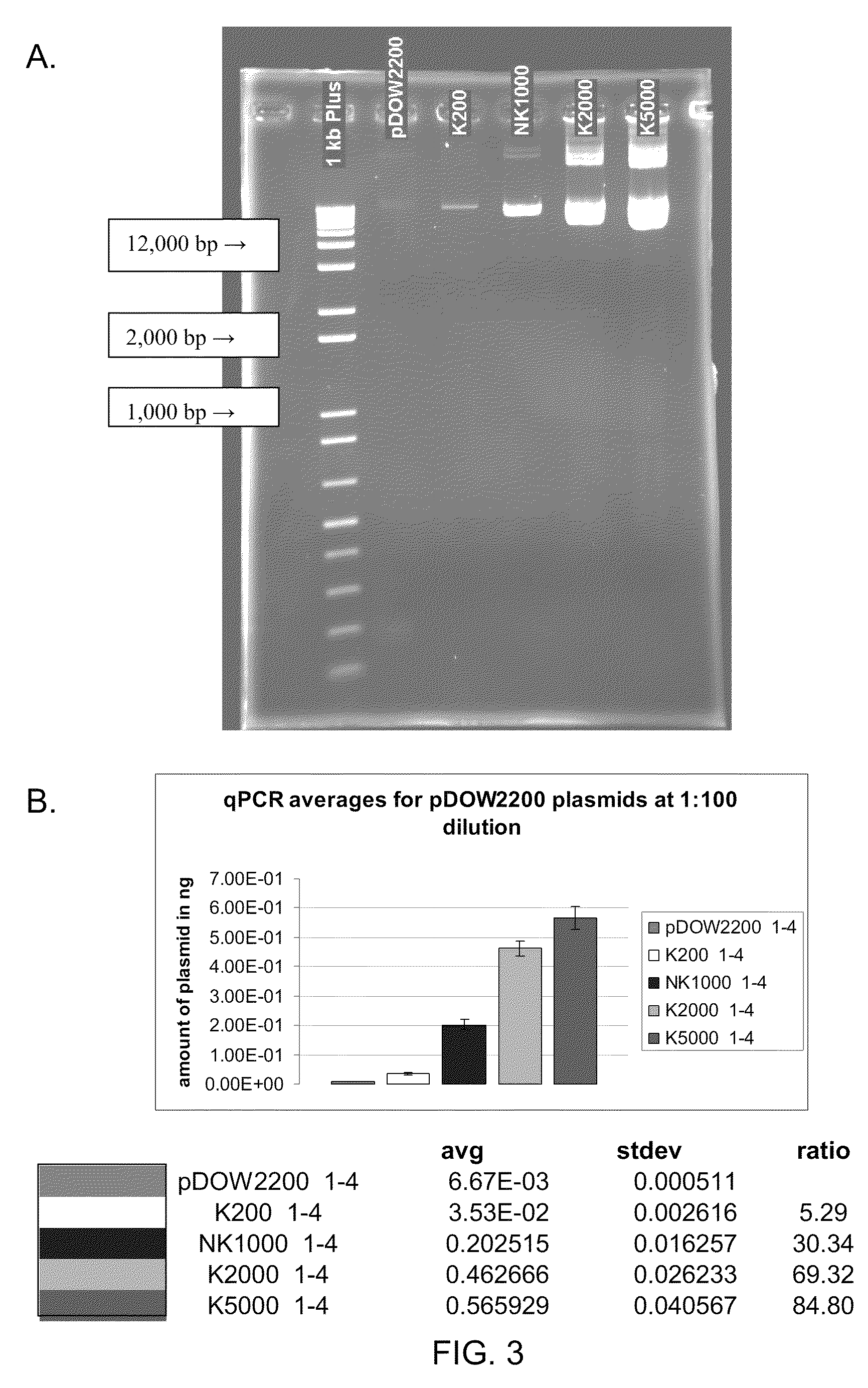High copy number self-replicating plasmids in pseudomonas
a plasmid and pseudomonas technology, applied in the field of molecular biology and cloning vectors, can solve the problems of slow cell growth and cell death, and achieve the effects of improving copy number plasmids, increasing plasmid copy number, and improving copy number
- Summary
- Abstract
- Description
- Claims
- Application Information
AI Technical Summary
Benefits of technology
Problems solved by technology
Method used
Image
Examples
experimental examples
Mutant Selection
[0134]Plasmid pDOW2200 was transformed into P. fluorescens strain MB 101 and transformants were selected on LB+Kan50 (50 μg / ml) plates. Transformant colonies from a single plate were scraped off and transferred into 2 ml of M9+Glu media. A 1×10−6 dilution was made in M9+Glu and then 50 μl was plated onto LB+Kan100, LB+Kan150 and LB+Kan200 plates. After 48 hours of growth at 30° C., five of the largest colonies from the Kan150 and Kan200 plates were each restreaked onto another plate of the same kanamycin concentration and then a single colony was inoculated into 3 ml of LB+Kan150 or LB+Kan200 respectively. Glycerol stocks of all the cultures were made and then from the same culture, Plasmid minipreps were made after O.D. normalizing the cultures (see below) of the five LB+Kan200 transformants, including the pDOW2200 parent plasmid. Five microliters of uncut DNA from each O.D. normalized miniprep was fractionated on a 1.5% agarose gel for comparison of DNA yields. Clo...
PUM
| Property | Measurement | Unit |
|---|---|---|
| temperature | aaaaa | aaaaa |
| temperature | aaaaa | aaaaa |
| temperature | aaaaa | aaaaa |
Abstract
Description
Claims
Application Information
 Login to View More
Login to View More - R&D
- Intellectual Property
- Life Sciences
- Materials
- Tech Scout
- Unparalleled Data Quality
- Higher Quality Content
- 60% Fewer Hallucinations
Browse by: Latest US Patents, China's latest patents, Technical Efficacy Thesaurus, Application Domain, Technology Topic, Popular Technical Reports.
© 2025 PatSnap. All rights reserved.Legal|Privacy policy|Modern Slavery Act Transparency Statement|Sitemap|About US| Contact US: help@patsnap.com



